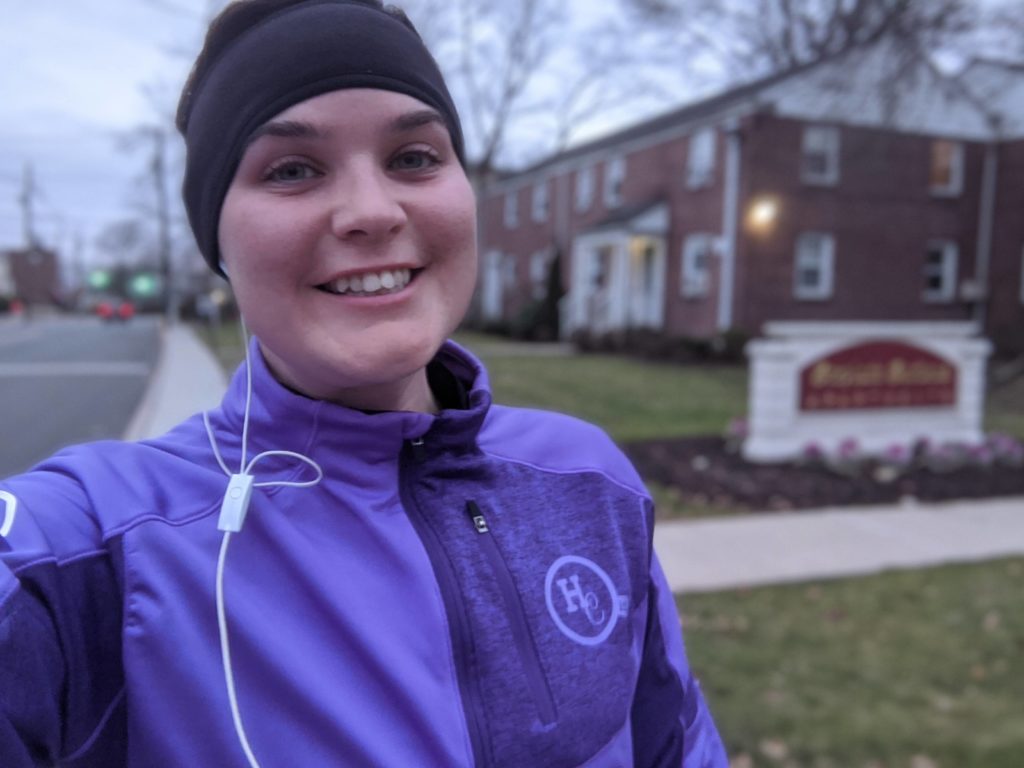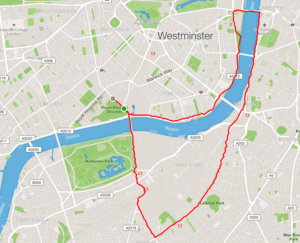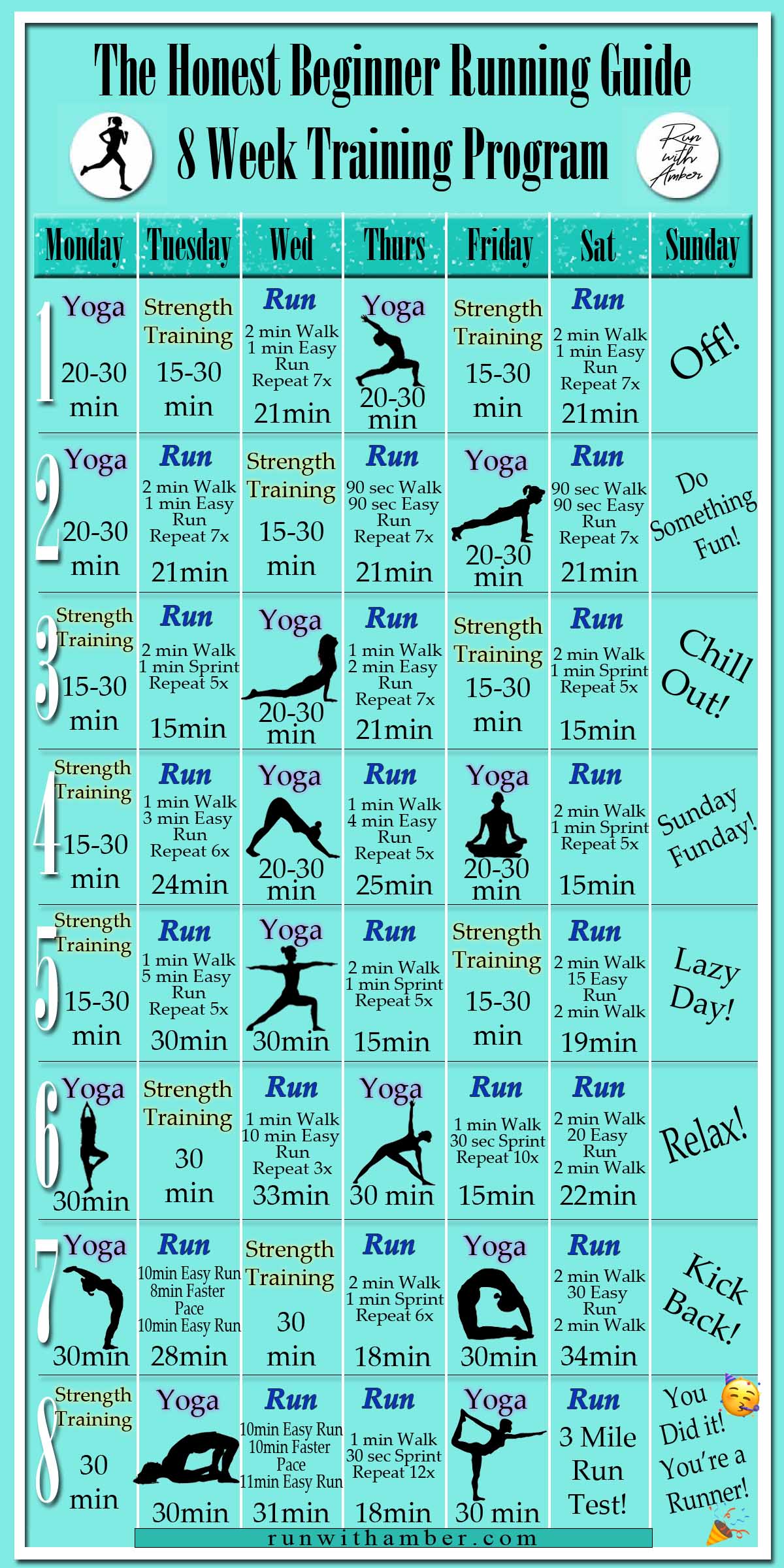Running For Beginners: An Honest Guide
I know it can seem overwhelming when you decide that you’d like to start running. You may have run years and years ago, or maybe this might be your first time considering running ever. This Running for Beginners Guide is for those folk who want to know an honest way on where to start.
A lot of running guides I see around on the web give you the gear you need to wear, the apps you need to use, and the protein drinks you need to start buying. While those are some great things you can add to your regime you don’t NEED them to get started. And sometimes with those lists it can make people feel like they can’t start running until they have ALL those things in your possession.
Where to Start
Let’s start with what you actually need in order to start running.
-
Appropriate Clothing
Of course the weather will determine what you’ll wear. My rule is to dress for 20 degrees warmer than the real feel temperature outside.
Why 20 degrees warmer?
Your body will heat up, and heat up quickly. There’s nothing worse than running uncomfortably. Running is hard enough right?
So, if it’s 50 degrees outside I dress as if it’s 70 degrees out. Which might entail my shorter running leggings, with a regular t-shirt. Any warmer I would wear a sleeveless moisture wicking material shirt. I stay away from cotton in the warmer months.
If, for example it’s 40 degrees out I’d wear a long sleeve shirt or turtle neck with my longer running leggings. This is the perfect running temperature in my opinion!

Now, if it’s 20s and 30s, I wear a turtleneck shirt with my fleece running pullover with gloves and a headband to cover my ears. Eventually those gloves might come off after a few miles, but those first couple miles I know my fingers are going to need them.
-
Footwear
Any comfortable sneakers will do. Just avoid Converse! Or sneakers that are flat. Skater shoes I’m talking to you too. Those can really do some damage to your feet and body overall while running. They are great for casual shoes, but not for a good run.
Make sure the sneakers have some tread in the sole left. You want sneakers that are going to absorb some of the shock on your feet hitting the ground. It protects your joints too so, don’t skip over this.
After you get some miles in and you are sticking to running, you might notice the tread on your sneakers is wearing away. This might be the time to buy new sneakers.
But start running first with what you have – see how it feels, and then go from there. I want you to start simple when it comes to running for beginners.
Read this article to look for the signs to buy new sneakers. The common rule is around 500 miles is the time to think about replacing your running shoes.
-
A Timing Device
This can be your phone, or a Fitbit, phone, a regular watch even. And this is only if you want to time your runs, which we’ll get into later.
You honestly can just go out and run once you’re dressed for the weather and have sneakers. No timing required if you don’t want to. It’s up to you.
A lot of runners do this a lot. We tend to get obsessed with the numbers quite a bit, and every now and then you need to just go out there, listen to your body, and have a good run. Spend some time with nature and keep your mind off your running pace.
Average Running Training Plans
I’ve seen a lot of training programs, and they really do set some serious running goals. Running for beginners is a challenge if you’ve never run before. A lot of programs you see have some high milage in week 1!
Yes, you want running goals, but straight out of the gate they expect you to run 5 to 6 times a week, for 20 or 30 straight minutes. I think that’s way too much! We have to think about conditioning. It takes time to build that up along with endurance. Plus we have to get your heart use to being used that way.
That’s a very high bar to set.
What Running Guides Should Be
Rather than going from 0 to 100 in a couple days I really feel that there has to be a more gradual process in place for beginner runners. Your first couple of weeks of running shouldn’t be all complete pain and soreness. Yes, you will have a bit of that regardless, but not so much where your mental game gets shaken too much and you think you’re not “built” for running, and you just give up.
The 10%
As a runner I like to look to running sites that give me all kinds of advice, and there’s always a big question on how to increase milage with runners. The general rule of thumb is to increase gradually only adding about 10% more a week. And that’s for people who’ve been running already for awhile.
Adapting that rule for running for beginners you’d essentially be starting at zero. So, start at 1 minute of running. It may seem like not enough, but when you get out there you will feel way different about that 1 minute.
For example, if I ran 10 miles the first week, my next week I shouldn’t be running that much over 11 miles. And that rule applies to timed runs too if distance isn’t your thing. If you ran 1 hour total the first week, the next week you can definitely get to 1 hour and 5 mins. If you run 3 times a week that’s only adding a minute and a half to each day you run. Attainable for sure!
These small increases are the small steps to get you to your big running for beginner goals.
Why is that advice in place?
All advice given when it comes to running is basically to help you run better, faster, but mostly to avoid injury. No one wants to over do it and then get an injury to end up not running for 6 to 8 months.
Everyone Needs a Win
So, why would a beginner runner that’s never run before start with an overwhelming running schedule with several miles to tackle?
Those programs are setting you up for failure.
I want to set you up for success. Give you those little wins bit by bit to give you the confidence that YES! You can be a runner too!
Suggested Activities to Help Your Runs
Before we jump into the training plan I wanted to suggest some things that can really make a difference when it comes to making your runs feel better, as in feeling stronger, faster, and more comfortable while running.
Would You Rather?
Let’s discuss the elephant in the room: Pain.
When I ask non-runners why they don’t run the answer I get most is: “It hurts.”
We’re human, pain is the thing we all want to avoid. But let’s weigh your options.
Would you rather want aches and pains just walking through your everyday life like climbing the stairs to your home, or carrying those heavy groceries in?
OR..
Would you tolerate some soreness from running, but your everyday activities are a breeze?
I’d rather have soreness from running any day than struggle through just my everyday activities.
-
Mindfulness
When it comes to pain, mindfulness is very important. You have to check in with your body. Pay attention to how each part of your body feels. What kind of pain are you feeling? Do a morning or nightly check in with your body and start from head to toe. How does your neck feel? Arms? Back? etc.
Being mindful of how each body part feels keeps you in tune with your body.
Now apply that during your run. When you start running you will feel a lot of different things. Think about what you’re feeling and why.
How is your breath?
If you feel like you can’t breath, be calm. Remember to control your breathing.
In and out steadily.
When you start running it can be tough to breath in through your nose and out through your mouth, but start that practice, it will help you so much during a run.
If you can’t catch your breath slow down. That’s totally ok. Controlling your breathing is half the battle of running. We have to be able to get the oxygen to your muscles to keep you running.
How do your muscles feel?
Do your legs feel heavy? Maybe your muscles might feel tight. This usually happens at the beginning of a run or at the end. Knowing that the first few minutes of a run always suck will get you through that tough part. This happens for everybody.
And when it comes to the end this is where endurance, and conditioning is really built. Running that last minute strong even when you and your muscles are tired.
I run long distance and I’m going be honest, I start feeling strong in a run when I get to about 2 or 2.5 miles into a run. Everybody is different. But that first mile in is always the absolute worst!
Side Stitches:
These are the sharp pains that happen on your right side below your rib cage. They hurt. I’m not gonna lie to you.
This happens to everyone that starts running. You’re moving muscles you’re not use to using. So, knowing that makes experiencing this awful occurrence a little bit better to endure. The key to making sure they don’t come back is to run through them.
Slow your pace, but make sure to keep going. This is the sign that you are conditioning and pushing your body to the next level. When I use to get these slowing down helped so much!
If it is too much, stop. Take a breather. Stretch your arms overheard and pull your wrists to the each side. Begin walking, and gradually work back into a run again.
Know that if you keep at it you won’t get side stitches forever.
Mindfulness goes a really long way.
Check in with your body. Think about why the pain is happening. Knowing the answers help you to get through your run. Getting through the tough parts of a run get you to your running goals.
-
Yoga
On your off days from running do yoga. There are several free videos on Youtube to get you started. I personally love Julia Marie and how she explains everything so well. I love all the information she gives! Here’s a great beginner video from her Youtube.
But, why do Yoga?
With any exercising, stretching is vital! This helps relieve pain. Stretching is what really helps me. It prevents injury, muscle tightness, pain, inflammation, and joint pain. It’s like a little treat to yourself after a run. Always stretch right after a run!
Yoga also helps you get more in tune with your body. Ya know that mindfulness I was talking about earlier. 😉 It helps you focus on your breathing and it really helps you to focus on how your body feels.
It’s hard to drop the mindfulness that you would do during yoga when you start running. You will pick up a great habit.
-
Strength Training
To a lot of people this scares them. People tend to think that strength training has to involve a ton of weights, barbells, and fancy equipment. Not at all.
You can use your own body weight to help strength train. No equipment needed. Save your money!
There are loads of exercises you can do to strengthen your muscles. Pushups, planks, leg lifts. This video is a great starting point for strength training without weights.
Why is strength training important when you start running?
You’re using your whole body when you run – some muscles will work more than others. The primary muscle like the Quads in your legs, and Hamstrings. But muscles like the Glutes help by supporting those primary muscles. So, you want to make sure that you build and strengthen those secondary muscles as well.
This is what helps you to get faster, and helps prevent injury.
Stronger muscles equal better and more comfortable feel good runs.
-
Data
When anyone starts something new we all want ways to look back and say: “Look how far I’ve come!” Data is the way to do that.
There are so many running apps out there. I use Strava. But any running app will do. Some of my friends swear by the Nike running app.
It’s a good way to see how much longer and further you can run, and how many miles you log week after week. It’s also a good way figure out how to increase your running time or milage week by week.
You can see your improvements
You might feel like it was a sucky run, but then you look at your data and see that your run was way faster than you expected. So, it turns into a win for you!
Running apps are an easy way to keep your running record. I also just love seeing the maps I create in the app on my runs. 🙂

Your Running for Beginners Guide
I log anywhere from 14 to 25 miles in a week. It depends on how I’m feeing. My average is 17 miles a week. I DON’T run everyday. I run 3 or 4 times a week. This guide is here to help you get started running, feel strong, and see those improvements. This will give you the little wins we all need.
The Honest Running for Beginners Guide below has yoga, and strength training scheduled in as well.
If you ever feel overwhelmed, or maybe you just can’t do Yoga that day take a rest. But test yourself and see what you can do!

And go into this knowing that not every run will be a good one.
Why a Bad Run Counts for Beginner Runners:
I had a horrible run just the other day. I ran 11 miles and struggled the entire way. My legs felt heavy, I had a slower pace, and I didn’t feel strong.
But I didn’t stop.
Those slow longer runs help me in my running goals. It improves my endurance. It trains my mind and body to get use to running in a bit of discomfort. I’m telling my body that I can still go even if I feel like I can’t.
Bad runs help built a better runner. So, don’t worry if you have a bad day. We all have them. Running for beginners is a great habit to start and a rewarding one!
Running for Beginners Quick Tips to Remember
- Stretch after a run. You need to stretch. Here is my 10 Essential Stretches for Runners.
- Eat after a run. Get some protein in you. This can be just some peanut butter, or a hard boiled egg. My favorite thing to eat after a run is a banana and peanut butter. I tend not to eat before a run. That’s my habit. But I suggest not running on a full stomach.
- Do a few minutes of walking before and after a run to warm you up and cool you down.
- Drink water! You have to stay hydrated. You should be drinking a lot through the day. You’ll lose a lot of water during a run.
I hope this Running For Beginners guide gives you the confidence to start running. Take it day by day. If you are wondering about how to run outside while we have to social distance here’s a guide for that.
Have you started running or want to. Tell me about it in the comments. What holds you back? Or tell me a goal you achieved!
